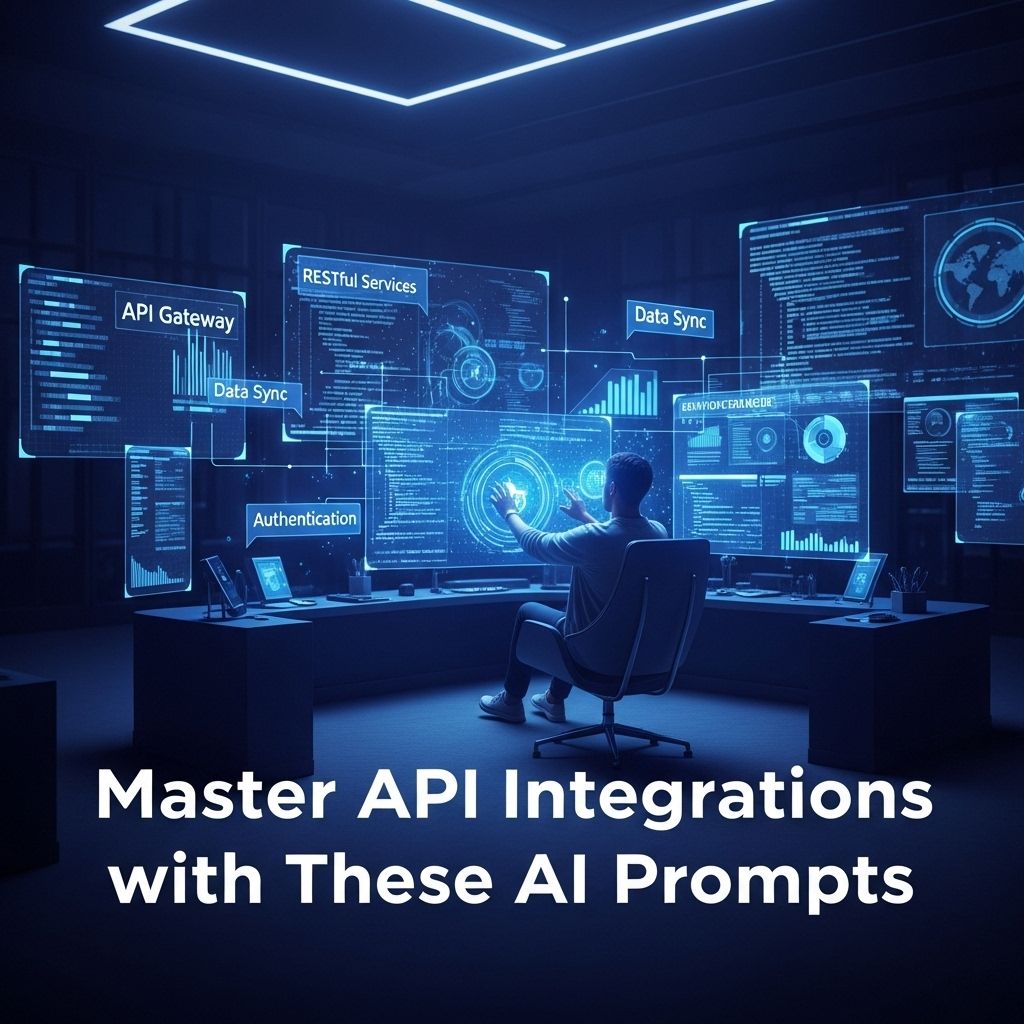In today’s fast-paced technological landscape, effective API integrations are crucial for businesses seeking to streamline operations and harness the full potential of their data. As applications evolve, so does the complexity of their interconnections. Leveraging AI prompts to facilitate these integrations can significantly enhance efficiency, empower developers, and optimize systems. This article delves into the intricacies of API integrations, explores the role of AI prompts in this process, and outlines best practices for seamless application connectivity.
Understanding API Integrations
API, or Application Programming Interface, serves as a bridge that allows different software applications to communicate with each other. The necessity for APIs arises from the need to share data and functionalities between disparate systems. Integration can lead to:
- Improved data sharing and accessibility
- Enhanced functionality through external services
- Increased automation within workflows
- Better user experiences by connecting features
The Role of APIs in Modern Applications
APIs have become pivotal in modern software architecture. They enable:
- Microservices Architecture: By breaking applications into smaller services, APIs allow for more manageable development and deployment.
- Cloud-Based Services: APIs facilitate interactions with cloud services, enabling scalability and flexibility.
- Third-Party Integrations: APIs make it possible to incorporate external functionalities, from payment gateways to social media.
Leveraging AI Prompts for API Integration
AI prompts can assist developers in creating efficient APIs by providing intelligent suggestions and automating repetitive tasks. Here’s how AI can enhance API integration processes:
- Code Generation: AI tools can generate boilerplate code, significantly reducing development time.
- Debugging Assistance: AI can analyze integration logs to identify and suggest fixes for errors.
- Documentation Automation: AI can help generate documentation based on the code and functionalities of APIs.
Examples of AI Prompts
Here are some practical AI prompts that can enhance your API integration efforts:
| AI Prompt | Description |
|---|---|
| “Generate a RESTful API endpoint for resource creation.” | Creates the necessary code for a basic API endpoint. |
| “Analyze the following integration logs and identify issues.” | Provides insights into potential errors and suggested fixes. |
| “Generate API documentation for the following endpoints.” | Automates the process of creating user-friendly documentation. |
Best Practices for API Integration
Implementing best practices in API integration can lead to enhanced performance and better maintainability. Consider the following guidelines:
1. Define Clear Objectives
Before initiating an API integration, clearly outline your goals. Ask yourself:
- What problems are we trying to solve?
- What data do we need to share?
- What functionalities should be integrated?
2. Use Standardized Protocols
Standardized protocols, such as REST and GraphQL, can simplify integration processes. Benefits include:
- Improved consistency across different integrations
- Stronger community support and documentation
- Faster onboarding for new developers
3. Implement Robust Security Measures
Security is paramount in API integration. Ensure to:
- Use HTTPS for secure data transmission
- Implement OAuth for user authentication
- Regularly audit API access and permissions
4. Monitor and Optimize Performance
Continuous monitoring is essential for maintaining API performance. Key performance indicators (KPIs) to track include:
- Response time
- Success rates of API calls
- Resource utilization
Future Trends in API Integrations
The landscape of APIs is constantly evolving. Here are some trends to watch out for:
1. Increased Use of AI and Machine Learning
AI and machine learning will play a significant role in API integrations, enabling smarter decision-making and automation capabilities.
2. GraphQL Adoption
GraphQL is gaining traction as a more efficient alternative to REST, providing clients with the ability to request only the data they need.
3. Enhanced Focus on Security
With the rise in cyber threats, security in API integrations will become even more critical, driving advancements in secure coding practices and authentication methods.
Conclusion
Mastering API integrations through the aid of AI prompts can significantly propel your organization toward operational excellence. By understanding the fundamentals of APIs, leveraging intelligent solutions, and adhering to best practices, you can create a more connected and efficient technology ecosystem. With the right tools and knowledge, the potential for innovation is limitless.
FAQ
What are API integrations and why are they important?
API integrations allow different software applications to communicate with each other, enabling data sharing and functionality enhancement. They are crucial for streamlining processes and improving efficiency.
How can AI prompts assist in mastering API integrations?
AI prompts can guide users through the process of setting up and managing API integrations by providing templates, troubleshooting tips, and best practices, making it easier to handle complex tasks.
What types of APIs can be integrated with AI prompts?
AI prompts can assist with various types of APIs, including REST, SOAP, and GraphQL APIs, across different platforms and services such as social media, payment gateways, and data storage solutions.
Are there any prerequisites for using AI prompts for API integrations?
Basic knowledge of programming and understanding of how APIs work are beneficial for effectively using AI prompts to master API integrations.
Can AI prompts help with debugging API integration issues?
Yes, AI prompts can provide valuable insights and suggestions for troubleshooting common API integration issues, helping to resolve problems more efficiently.
Where can I find AI prompts specifically designed for API integrations?
AI prompts for API integrations can be found in developer community forums, specialized websites, and platforms that offer coding resources and tutorials.




